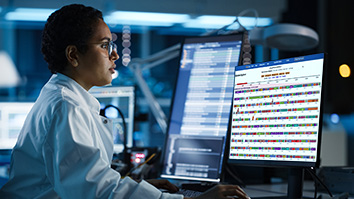Citation
Lessov-Schlaggar, C. N., Benowitz, N. L., Jacob, P., & Swan, G. E. (2009). Genetic influences on individual differences in nicotine glucuronidation. Twin Research and Human Genetics, 12(5), 507-513.
Abstract
Nicotine and its primary oxidative metabolites are metabolized in part by glucuronidation. Genetic variation in UGT isoenzymes that catalyze glucuronidation activity suggests that variation in glucuronidation rate is in part genetically determined. The relative contribution of genetic and environmental sources to individual differences in the rate of glucuronidation of nicotine, cotinine, and trans-3′-hydroxycotinine was estimated in a twin study of nicotine pharmacokinetics. Glucuronidation rate was defined using measures that either accounted for variability in renal clearance or assumed the same relative renal clearance of parent drug and glucuronide conjugate across individuals. The former definition resulted in highly correlated nicotine and cotinine glucuronidation measures that were substantially influenced by the combined effect of additive (heritable) and non-additive (dominant and epistatic) genetic effects. These findings suggest that genetic variation in UGT isoenzymes that act in additive and interactive ways is an important determinant of individual variability in nicotine and cotinine metabolism via glucuronidation pathways.
Keywords: nicotine metabolism, glucuronidation, twins, heritability


